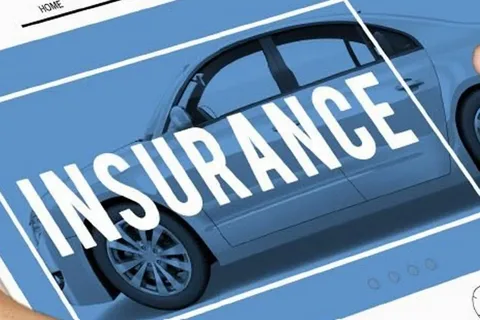Understanding Auto Insurance: A Comprehensive Guide
Auto insurance is a crucial aspect of vehicle ownership, providing financial protection against accidents, theft, and other unforeseen events. This article will delve into the various facets of auto insurance, ensuring you have all the information you need to make informed decisions.

What is Auto Insurance?
Auto insurance is a contract between you and an insurance company that protects you against financial loss in the event of an accident or theft. In exchange for your premium payments, the insurance company agrees to pay your losses as outlined in your policy.
Types of Auto Insurance Coverage
Auto insurance policies typically include several types of coverage:
- Liability Coverage: This covers damages you cause to others in an accident.
- Collision Coverage: This pays for damage to your car resulting from a collision.
- Comprehensive Coverage: This covers damage to your car from non-collision events like theft, fire, or natural disasters.
- Personal Injury Protection (PIP): This covers medical expenses for you and your passengers.
- Uninsured/Underinsured Motorist Coverage: This protects you if you’re hit by a driver without insurance or with insufficient insurance.
Why Do You Need Auto Insurance?
Auto insurance is not just a legal requirement in most places; it’s also a financial safety net. Without it, you could be on the hook for thousands of dollars in damages and medical bills. Additionally, having adequate coverage can provide peace of mind, knowing you’re protected against various risks.

How to Choose the Right Auto Insurance Policy
Choosing the right auto insurance policy can be overwhelming, but here are some tips to help you make the best decision:
Assess Your Needs
Consider factors like your driving habits, the value of your car, and your financial situation. For instance, if you have a new or expensive car, comprehensive and collision coverage might be essential.
Compare Quotes
Shop around and compare quotes from different insurance providers. Websites like Insurance.com and NerdWallet can help you compare rates and coverage options.
Check the Insurer’s Reputation
Research the insurance company’s reputation for customer service and claims handling. Websites like J.D. Power and Better Business Bureau provide ratings and reviews.
Common Auto Insurance Discounts
Many insurance companies offer discounts that can help lower your premium. Some common discounts include:
- Safe Driver Discount: For drivers with a clean driving record.
- Multi-Policy Discount: For bundling auto insurance with other types of insurance, like home or renters insurance.
- Good Student Discount: For students with good grades.
- Low Mileage Discount: For drivers who don’t drive many miles annually.
Understanding Your Auto Insurance Policy
It’s essential to understand the details of your auto insurance policy. Here are some key terms and concepts:
Premium
The amount you pay for your insurance policy, usually monthly or annually.
Deductible
The amount you pay out of pocket before your insurance coverage kicks in. Higher deductibles typically mean lower premiums.
Policy Limits
The maximum amount your insurance company will pay for a covered loss. It’s crucial to choose limits that adequately protect your assets.
Filing an Auto Insurance Claim
If you’re involved in an accident or your car is damaged, you’ll need to file a claim with your insurance company. Here’s a step-by-step guide:
- Report the Incident: Contact your insurance company as soon as possible to report the incident.
- Provide Documentation: Submit any required documentation, such as a police report, photos of the damage, and medical bills.
- Work with the Adjuster: An insurance adjuster will assess the damage and determine the payout.
- Receive Payment: Once your claim is approved, you’ll receive payment for the covered losses.
Frequently Asked Questions About Auto Insurance
What factors affect my auto insurance premium?
Several factors can influence your premium, including your age, driving record, location, type of car, and credit score.
Can I change my coverage mid-policy?
Yes, you can usually adjust your coverage at any time. Contact your insurance provider to discuss your options.
What should I do if I’m in an accident?
First, ensure everyone’s safety and call emergency services if needed. Then, exchange information with the other driver and document the scene. Finally, report the accident to your insurance company.

Conclusion
Auto insurance is a vital part of responsible vehicle ownership. By understanding the different types of coverage, assessing your needs, and choosing the right policy, you can ensure you’re adequately protected. Remember to shop around, compare quotes, and take advantage of available discounts to get the best deal. Safe driving!
Feel free to reach out if you have any questions or need further assistance with your auto insurance needs. Drive safe and stay protected! 🚗💼
- Exploring Remote Pet Insurance Jobs: A Comprehensive Guide
- Otter Car Insurance: Everything You Need to Know
- ABMP Insurance: Your Guide to Comprehensive Coverage
- ABC Car Insurance: Everything You Need to Know
- Travel Guard Insurance Settlement: Everything You Need to Know
- SR-22 Insurance in Iowa: Everything You Need to Know
- Primo Insurance: Your Trusted Partner for Comprehensive Coverage
- Rodriguez Insurance: Your Comprehensive Guide to Coverage
- Seaview Insurance: Your Ultimate Guide to Comprehensive Coverage
- Insurance Agent vs Insurance Adjuster: Understanding the Differences
Leave a Reply